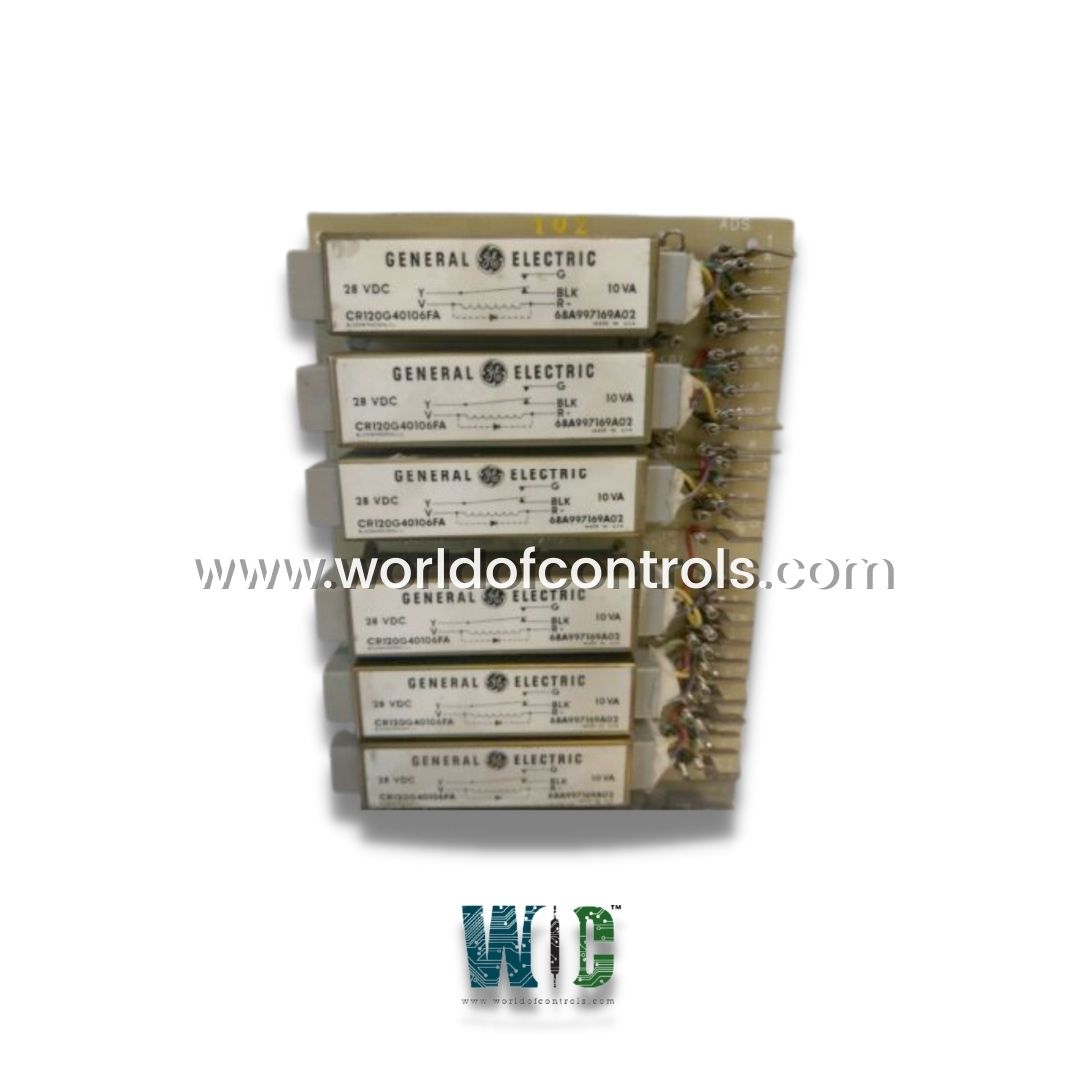
World Of Controls understands the criticality of your requirement and works towards reducing the lead time as much as possible.
IC3600KRSD1 - Reed Relay Board is available in stock which ships the same day.
IC3600KRSD1 - Reed Relay Board comes in UNUSED as well as REBUILT condition.
To avail our best deals for IC3600KRSD1 - Reed Relay Board, contact us and we will get back to you within 24 hours.
SPECIFICATIONS:
Part No: IC3600KRSD1
Manufacturer: General Electric
Product Type: Reed Relay Board
Series: Mark II
Operating temperature: -30 to 55 ºC
Power Supply Voltage: 24 V dc
Board Size: 2.8 cm high x 8.6 cm
Weight: 0.45 kg
Availability: In Stock
Country of Origin: USA
FUNCTIONAL DESCRIPTION:
IC3600KRSD1 is a Reed Relay Board manufactured and designed by General Electric as part of the Mark II Series used in GE Speedtronic Control Systems. A reed relay board is an electronic device that uses reed relays to switch or control electrical circuits. Reed relays are a type of electromechanical switch that consists of one or more reed switches enclosed in a glass tube. These switches are typically operated by a magnetic field, which causes the reed contacts inside the tube to open or close. A reed relay board typically includes multiple reed relays mounted on a printed circuit board (PCB) along with associated control circuitry. These boards are designed to provide a convenient and compact way to switch or control various electrical signals, such as digital or analog signals. Here are some key features and uses of reed relay boards:
WOC has the largest stock of OEM replacement parts for GE Speedtronic Gas Turbine Control Systems. We can also repair your faulty boards and supply unused and rebuilt boards backed up with a warranty. Our team of experts is available round the clock to support your OEM needs. Our team of experts at WOC is happy to assist you with any of your automation requirements. For pricing and availability on parts and repairs, kindly contact our team by phone or email.
What is the Reed Relay Board?
It is a relay card designed by General Electric (GE) for use in their Mark I and Mark II Speedtronic turbine control systems. It is used to control and switch various turbine functions in power generation systems.
What is the function of the Reed Relay Board in turbine control systems?
The Reed Relay Board is used to switch relays that manage various turbine operations, such as starting, stopping, and regulating turbine speeds. It ensures reliable and precise control of turbine components in industrial settings.
What kind of relays does the Reed Relay Board control?
The Reed Relay Board typically controls electromechanical relays, which are used to open and close circuits in turbine systems, providing electrical isolation between control circuits and high-power systems.